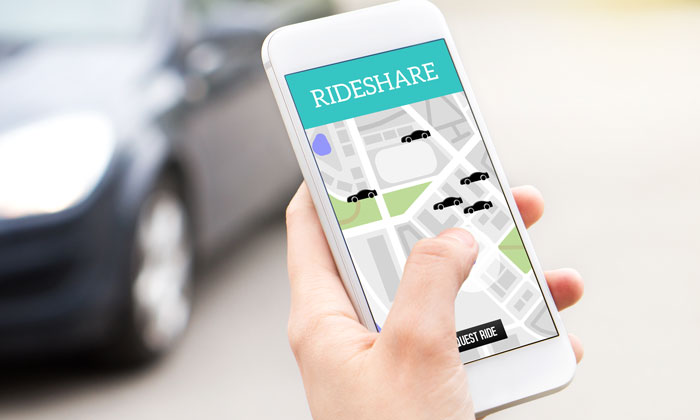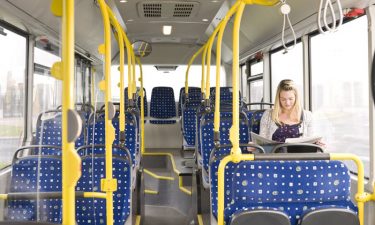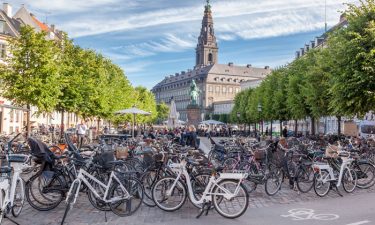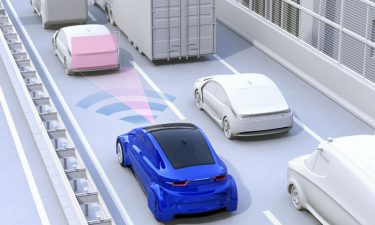Why ride-sharing on its own isn’t the solution to transport woes
- Like
- Digg
- Del
- Tumblr
- VKontakte
- Buffer
- Love This
- Odnoklassniki
- Meneame
- Blogger
- Amazon
- Yahoo Mail
- Gmail
- AOL
- Newsvine
- HackerNews
- Evernote
- MySpace
- Mail.ru
- Viadeo
- Line
- Comments
- Yummly
- SMS
- Viber
- Telegram
- Subscribe
- Skype
- Facebook Messenger
- Kakao
- LiveJournal
- Yammer
- Edgar
- Fintel
- Mix
- Instapaper
- Copy Link
Posted: 12 March 2018 | Stuart Pearson - Capital Law | No comments yet
Stuart Pearson, an Associate in the Construction, Energy & Projects team at Capital Law, discusses the future of our cities in view of the exponential growth of innovative transport firms, including Uber, Lyft and Zipcar…


Innovative transport companies Uber, BlaBlaCar, Citymapper, Didi, Keolis, LimeBike, Lyft, Mobike, Motivate, Ofo, Ola, Scoot Networks, Transit, Via and Zipcar all share the aim of reducing the amount of privately owned cars in cities, offering shared rides or alternative modes of transport like collectively owned bikes.
This new breed of innovative transport companies shares a common goal to reduce the amount of single occupancy journeys being undertaken worldwide. The intention being that fewer cars on the road will lead to a decrease in air pollution. As Uber’s website states: “Fewer miles driven means less fuel consumption and carbon dioxide emissions.”
Are trains, buses and tubes threatened?
It is no secret that public transport across the UK would benefit from an upgrade. Trains and buses are late, cramped, uncomfortable and often not very clean. The rolling stock currently in use in certain locations is over 30 years old and in desperate need of renewal. Additionally, the services provided are becoming increasingly expensive, with some commuters being ‘priced out’ of their journey to work due to the last rail fare hike.
Outside of London the ‘one ticket’ service is practically non-existent. If you have to catch a bus, then a train, another bus and then walk to work (which is not unusual), you will find yourself in the position of having to buy multiple tickets, rather than just one pass for the whole journey.
In comparison, when using a ride-sharing app, you plug into the app where you are leaving from and going to, then depending on availability, you could be transported door-to-door. The luxury of having a space in a car and no need for multiple expensive tickets clearly outweighs getting on a stuffy tube.
Joseph Okpaku, Vice President of Public Policy, Lyft says: “At Lyft, we believe our cities should be built around people not cars. That’s why we’ve committed to the Shared Mobility Principles for Liveable Cities and are excited to join them in supporting policies that encourage shared rides, fair use fees and truly multi-modal communities. Working together we can have a real impact on congestion, making our cities easier to get around and more enjoyable to live in.”
Ride-sharing isn’t all good
Despite public transport and its inconvenient idiosyncrasies, there are clearly some downsides to ride-sharing too and companies Ofo and Mobike were recently dealt a particularly bad blow to their ethically branded businesses models. Research by the Institute of Transportation at the University of California found that the increase in people using these apps has meant a reduction in the amount of people opting for public transport, which in turn is increasing the amount of pollution in cities.


Less people are using public transport with more mobility services available
As a more local example, South Wales has seen a trend towards car-sharing for the commute to Bristol. This involves people driving part of the journey, abandoning their cars in lay-bys or near large roundabouts on the M4 for the day and then sharing a car with other commuters for the rest of the journey.
Objectively, there are not necessarily less cars on the road in the morning/evening. According to figures published by the BBC last year: “Since 2011, the number [of licenced cars] has increased by about 1.6 million in England, 142,000 in Scotland and 69,000 in Wales.” The RAC Foundation have cited a number of reasons for the rise in car ownership including the growing population, fall in the cost of buying cars and even the rise in the number of women in work.
Grid-locked traffic in certain areas of the country is unavoidable due to population density. We also need to consider the unfortunate fact that there could be potential safety issues of sharing a car with a complete stranger.
Despite the well-intentioned idea of ride-sharing, it cannot fully alleviate the need for public transport.
Public transport as the backbone of mobility
Other European cities provide us with clear examples of how public transport can work efficiently. In larger German cities such as Munich or Berlin, transportation often consists of four different but interconnected systems. The U-Bahn (underground train) and S-Bahn (suburban express train) are usually, albeit not always, the fastest. As the public transportation systems in Germany are usually regional, a ticket for the S-Bahn is also valid for a streetcar or bus.
Unlike the Tube in London, the Metro in Paris, BART in San Francisco or urban rail systems in most world cities, you won’t encounter any turnstiles on the S- or U-Bahn in Germany. You don’t have to feed your ticket into a machine to get to your train. It relies on a system of ‘trust but verify’, where tickets must be ready for inspection if requested by plain clothed ticket inspectors.


Copenhagen has a fantastic cycling system within the city
Copenhagen is a great example of a city combining both excellent public transport and one of the most extensive cycling systems in the world. The city’s system was named the world’s best metro in 2008 and 2010. Amsterdam is another fine example, combining excellent public transport and a network of bike paths where cyclists rule. It’s the capital of one of Europe’s lowest CO2 producing countries where every train in the country is wind-powered and has been for over a year.
As an alternative to public transport, Amsterdam has also implemented low emissions zones across the city, which applies to all vehicles as of 2018. There are also tax benefits for electric cars, making them cheaper than most high-end cars. As a result, the airport taxi rank is now a Tesla billboard, which doesn’t harm the city’s image either. There are also plans for every tram in the city to be solar powered.
In Wales, the implementation of the Future Generations Act has forced the devolved Welsh Government to consider innovative ways of meeting ‘decarbonisation targets’.
Sophie Howe, the Future Generations Commissioner, gave details on her aims to: “Challenge public bodies to think about the long-term impact of the decisions they made and these should not be skewed towards benefiting the economy alone to the detriment of the environment, social or cultural well-being of Wales.”
With this in mind, the South Wales Metro (Metro De Cymru) proposed the integration of heavy rail and the development of light rail and bus-based public transport services in South East Wales around the hub of Cardiff Central. The first phase of which was approved for development in October 2013.
In Wales again, the construction of the M4 Relief Road has been discussed for over 25 years and aims to alleviate the heavy traffic congestion around the commuter routes in and out of Cardiff and Newport. The Welsh Government have set out their proposal for a new section of motorway, and states: “It is considered to be the sustainable, long-term solution to current social, environmental and economic problems associated with this route [from Newport to Cardiff]. It forms an essential part of our vision for an efficient integrated transport system in South Wales. It will improve accessibility for people as well as Welsh goods and services to international markets.”
There is currently a debate raging in Wales about whether the metro scheme should take precedence over the construction of the M4 Relief Road. This debate is centred on environmental factors and from a funding perspective. What it serves to highlight is that not only do we need multi-faceted forms of transport, but also multiple forms of funding. The M4 Relief road scheme will be publicly funded by the Welsh Government however, the construction of the Metro will receive public-private funding, provided by the Cardiff City Region Deal.
Advances in technology
We have seen major advances in the development of electronic vehicles (EVs) over the last couple of years, thanks to companies like Tesla who have been at the forefront of research and development. For the use of EVs to become more widespread, there needs to be major advances in driving down production costs. If cost reduction pathways can be put in place, we may see EVs being affordable to the general public rather than just the wealthy.
However, EVs could present a big challenge to existing laws surrounding the presumption of liability. Currently an act of wrongdoing is the responsibility of the human who committed it, and so they are liable for it. The introduction of driverless vehicles would mean that if an accident occurred, the responsibility would lie with the computers on-board the vehicles, rather than human drivers. It may be simpler to attribute liability to a mechanical fault or technological issue, but in reality, we may find that changes in the law are required.


If an autonomous vehicle crashes the responsible party is unclear
Data protection is something that could potentially cause an issue in the future with the use and storage of personal data in ride-sharing apps. Vice President of Government Relations, Lyft, Joe Okpaku, said ride-sharing companies need to share data in a way that is: “Protecting the very legitimate privacy interests of our consumers and making sure that their personal PII data and their travel history data is not falling into the wrong hands.”
Most drivers have experienced the inconvenient, ‘Have you been involved in a motor accident?’ phone calls. It would be a great reassurance to know that data is safe and phone calls like this could be avoided in future.
The answer
There is no ‘one size fits all’ solution. As described above, there are pros and cons to both public transport and the various ride-sharing schemes that are on the market. Although Amsterdam is far from perfect, it highlights that reducing congestion and pollution caused by transportation is a complex issue and it cannot be solved by ride-sharing alone. To make commuting more bearable and keep levels of pollution down, we must adopt a collaborative and integrated approach. The key considerations are:
- Commuter satisfaction
- Quality of existing infrastructure
- Potential for new infrastructure (both cost and space)
- Smart technology
- Public and private funding
- A desire to deliver infrastructure projects.
This view is supported by Robin Chase, co-Founder of Zipcar, who states that: “We need transit and shared bikes and shared cars and ride-sharing and intercity ride vehicles to replace personal cars in this more efficient and more sustainable way. So collectively as a group we will see measurable progress in cities.”
Related topics
On-Demand Transport, Passenger Experience
Related organisations
Capital Law
Related people
Stuart Pearson







